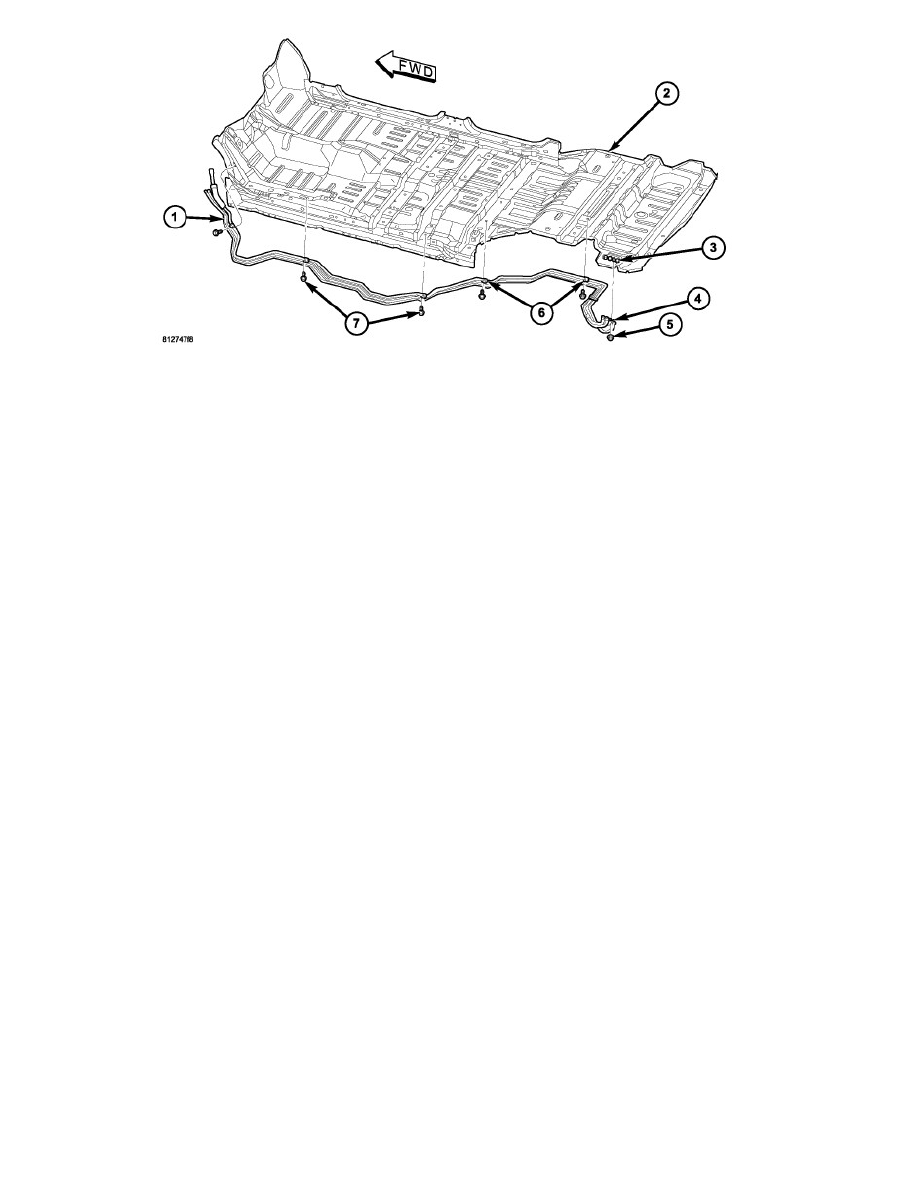Durango 2WD V8-5.7L Hybrid (2009)

15. Remove all body mount bolts on the passenger side of the vehicle and loosen the body mount bolts on the drivers side.
16. Place a jackstand at the front and rear of the vehicle on the passenger side so that the stands will safely support the body.
17. Remove the five screws (7) that secure the underbody lines (1) to the vehicle underbody (2).
18. Carefully lower the hoist until the right side of the body (supported by the stands) is approximately 76-101 mm (3-4 in.) above the frame. This will
gain access to remove the underbody line assembly.
19. Remove the underbody line assembly from the underneath of the vehicle body.
A/C Underbody Lines - Installation
INSTALLATION
CAUTION: Be certain to adjust the refrigerant oil level when servicing the A/C refrigerant system See: Specifications/Capacity
Specifications/Refrigerant Oil Capacity . Failure to properly adjust the refrigerant oil level will prevent the A/C system from
operating as designed and can cause serious A/C compressor damage.
CAUTION: Always use ND-11 Polyester (POE) oil from Mopar(R) in Hybrid Electric Vehicle (HEV) models. Never use Polyalkylene Glycol
(PAG) oil in an HEV model. See Refrigerant Oil for more information.
CAUTION: Polyalkylene Glycol (PAG) oil can contaminate the refrigerant system of a Hybrid Electric Vehicle (HEV) and lead to A/C system
damage and failure. If the refrigerant recovery/recycling and charging equipment was last used on a non-HEV model, flush the
hoses of the equipment with a solvent approved by the equipment manufacturer before using the equipment on an HEV model, or
use refrigerant recovery/recycling and charging equipment designated only for HEV models by your service facility. See the
operating instructions supplied by the equipment manufacturer for proper use and care of the refrigerant recovery/recycling and
charging equipment.
NOTE: When replacing multiple A/C system components, refer to the Refrigerant Oil Capacities chart to determine how much oil should be
added to the refrigerant system See: Specifications/Capacity Specifications/Refrigerant Oil Capacity .
NOTE: Replacement of the refrigerant line O-ring seals and gaskets is required anytime a refrigerant line is disconnected. Failure to replace
the rubber O-ring seals and metal gaskets could result in a refrigerant system leak.
